Don Lind, astronaut, dies
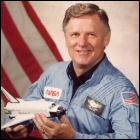 Don Lind, a veteran of the Apollo, Skylab and space shuttle eras at NASA, dies at the age of 92. Born in Midvale, Utah, his service as a U.S. Navy pilot and a degree in nuclear physics brought him to the attention of NASA, and he was a member of the agency’s fifth astronaut class, many of whom went to the moon. Lind was considered for the crew of Apollo 20 until that mission’s cancellation. During the Skylab space station’s tenure, he was assigned to the crew of the Skylab Rescue contingency mission (which ultimately was deemed unnecessary) and then as a potential member of a fourth Skylab crew, whose mission was also cancelled. By the time Lind made his only spaceflight, aboard the shuttle Challenger in 1985, he had been waiting nearly two decades for a flight. He retired from NASA following his flight, and went on to teach at Utah State University.
Don Lind, a veteran of the Apollo, Skylab and space shuttle eras at NASA, dies at the age of 92. Born in Midvale, Utah, his service as a U.S. Navy pilot and a degree in nuclear physics brought him to the attention of NASA, and he was a member of the agency’s fifth astronaut class, many of whom went to the moon. Lind was considered for the crew of Apollo 20 until that mission’s cancellation. During the Skylab space station’s tenure, he was assigned to the crew of the Skylab Rescue contingency mission (which ultimately was deemed unnecessary) and then as a potential member of a fourth Skylab crew, whose mission was also cancelled. By the time Lind made his only spaceflight, aboard the shuttle Challenger in 1985, he had been waiting nearly two decades for a flight. He retired from NASA following his flight, and went on to teach at Utah State University.
Owen K. Garriott, astronaut, dies
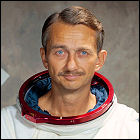 Skylab and Space Shuttle astronaut Owen K. Garriott dies at the age of 88. Born in Oklahoma, former U.S. Navy electronics officer Garriott went on to Stanford University to pursue a doctorate, and returned to Stanford to teach physics and electronics until 1965, when he was selected by NASA as one of the first “scientist astronauts” for future Apollo and Apollo Applications Program missions. (Only one scientist astronaut, Harrison Schmitt, flew to the moon before the Apollo program’s budgetary lunar wings were clipped by the Nixon administration.) Garriott first flew to space in 1973 as part of the second Skylab long-duration crew, staying in orbit for a record-setting two months with his two crewmates, and flew as a mission specialist aboard the first Space Shuttle mission to carry the Spacelab laboratory module into orbit in 1983. Both before and after his second and final flight, he was involved in consulting on the ever-changing design for a planned space station, which, after many changes, evolved into the International Space Station. He was the father of Richard Garriott, designer of the Ultima computer adventure game series who later visited the ISS as a space tourist aboard a Soyuz flight; they were the first father/son astronauts in America (preceded only by cosmonauts Alexander and Sergei Volkov).
Skylab and Space Shuttle astronaut Owen K. Garriott dies at the age of 88. Born in Oklahoma, former U.S. Navy electronics officer Garriott went on to Stanford University to pursue a doctorate, and returned to Stanford to teach physics and electronics until 1965, when he was selected by NASA as one of the first “scientist astronauts” for future Apollo and Apollo Applications Program missions. (Only one scientist astronaut, Harrison Schmitt, flew to the moon before the Apollo program’s budgetary lunar wings were clipped by the Nixon administration.) Garriott first flew to space in 1973 as part of the second Skylab long-duration crew, staying in orbit for a record-setting two months with his two crewmates, and flew as a mission specialist aboard the first Space Shuttle mission to carry the Spacelab laboratory module into orbit in 1983. Both before and after his second and final flight, he was involved in consulting on the ever-changing design for a planned space station, which, after many changes, evolved into the International Space Station. He was the father of Richard Garriott, designer of the Ultima computer adventure game series who later visited the ISS as a space tourist aboard a Soyuz flight; they were the first father/son astronauts in America (preceded only by cosmonauts Alexander and Sergei Volkov).
Pete Conrad, astronaut, dies
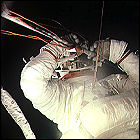 Pete Conrad, the Apollo 12 commander who was the third human to walk on the moon, dies at the age of 69 from injuries suffered in a motorcycle accident. Conrad went to the moon in November 1969, and flew two earlier Gemini missions, one of which was a new human endurance record at the time. Conrad later went on to set a new record for time spent by a human in space (28 days, unprecedented at the time) in 1973 as a member of the first Skylab crew. Conrad and fellow Skylab astronaut Joseph Kerwin performed an extended and very hazardous spacewalk to repair the station, which had been heavily damaged during launch a few weeks before its crew arrived.
Pete Conrad, the Apollo 12 commander who was the third human to walk on the moon, dies at the age of 69 from injuries suffered in a motorcycle accident. Conrad went to the moon in November 1969, and flew two earlier Gemini missions, one of which was a new human endurance record at the time. Conrad later went on to set a new record for time spent by a human in space (28 days, unprecedented at the time) in 1973 as a member of the first Skylab crew. Conrad and fellow Skylab astronaut Joseph Kerwin performed an extended and very hazardous spacewalk to repair the station, which had been heavily damaged during launch a few weeks before its crew arrived.
The Sky(lab) is falling
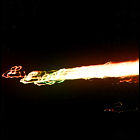 After intense solar activity results in a brief swelling of Earth’s atmosphere, Skylab‘s days are numbered: it has already been slowed enough by contact with the outermost layers of the atmosphere to come tumbling back to Earth. Unoccupied since 1974, the now-derelict space station is expected to disintegrate harmlessly over the Indian Ocean, but NASA is caught off-guard when unexpectedly large chunks of Skylab survive long enough to crash into the Australian outback. No one on the ground is hurt, and NASA is jokingly fined for littering.
After intense solar activity results in a brief swelling of Earth’s atmosphere, Skylab‘s days are numbered: it has already been slowed enough by contact with the outermost layers of the atmosphere to come tumbling back to Earth. Unoccupied since 1974, the now-derelict space station is expected to disintegrate harmlessly over the Indian Ocean, but NASA is caught off-guard when unexpectedly large chunks of Skylab survive long enough to crash into the Australian outback. No one on the ground is hurt, and NASA is jokingly fined for littering.
Saving Skylab?
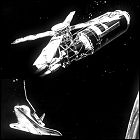 NASA and its contractors mull over a report outlining an ambitious (and, considering the continuous delays to the first launch of the Space Shuttle program, overly optimistic) plan to reactivate and occupy the Apollo-era space station Skylab for use by shuttle crews. The plan involves outfitting the ailing station with new solar power panels and equipment, and performing repairs to make it habitable for future astronauts. Despite the best-laid plans, however, the shuttle’s first launch comes after Skylab tumbles back through Earth’s atmosphere.
NASA and its contractors mull over a report outlining an ambitious (and, considering the continuous delays to the first launch of the Space Shuttle program, overly optimistic) plan to reactivate and occupy the Apollo-era space station Skylab for use by shuttle crews. The plan involves outfitting the ailing station with new solar power panels and equipment, and performing repairs to make it habitable for future astronauts. Despite the best-laid plans, however, the shuttle’s first launch comes after Skylab tumbles back through Earth’s atmosphere.
Skylab 4
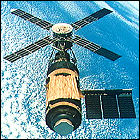 The third and final crew of the first American space station, Skylab 4, lifts off for an 84-day stay. The crew’s tasks include medical and biological experiments, solar observations (including the first space-based recording of solar flare origination), and observations of Comet Kohoutek. Crewmembers Gerald Carr, William Pogue and Edward Gibson have a frank discussion with ground controllers about their extremely busy work schedule (similar to heated discussions between Apollo 7’s crew and Houston) halfway through the nearly-three-month mission. Skylab is left powered down, but still habitable, at the end of the crew’s stay, in anticipation that future Space Shuttle crews will someday occupy Skylab.
The third and final crew of the first American space station, Skylab 4, lifts off for an 84-day stay. The crew’s tasks include medical and biological experiments, solar observations (including the first space-based recording of solar flare origination), and observations of Comet Kohoutek. Crewmembers Gerald Carr, William Pogue and Edward Gibson have a frank discussion with ground controllers about their extremely busy work schedule (similar to heated discussions between Apollo 7’s crew and Houston) halfway through the nearly-three-month mission. Skylab is left powered down, but still habitable, at the end of the crew’s stay, in anticipation that future Space Shuttle crews will someday occupy Skylab.
Skylab rescue mission prepared
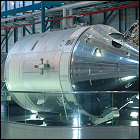 A thruster leak in the Skylab 3 crew’s Apollo command/service module forces NASA to consider a Skylab Rescue mission using a modified five-seater Apollo vehicle, mounted atop a Saturn IB and rolled out to the pad in readiness for the emergency flight. NASA brings in enough engineers and employees to have shifts working around the clock, seven days a week, to get the emergency mission ready for launch on September 9th. The thruster issue is later resolved, and the first-ever planned space rescue mission stands down. Astronauts Vance Brand and Don Lind are assigned to the rescue mission; both men later flew the Space Shuttle, though Brand will also fly in the Apollo-Soyuz Test Project. The modified command/service module and Saturn rocket are retained in case a rescue is needed for the final Skylab flight, and then as an Apollo-Soyuz backup vehicle, before being retired and displayed at the Smithsonian and Kennedy Space Center.
A thruster leak in the Skylab 3 crew’s Apollo command/service module forces NASA to consider a Skylab Rescue mission using a modified five-seater Apollo vehicle, mounted atop a Saturn IB and rolled out to the pad in readiness for the emergency flight. NASA brings in enough engineers and employees to have shifts working around the clock, seven days a week, to get the emergency mission ready for launch on September 9th. The thruster issue is later resolved, and the first-ever planned space rescue mission stands down. Astronauts Vance Brand and Don Lind are assigned to the rescue mission; both men later flew the Space Shuttle, though Brand will also fly in the Apollo-Soyuz Test Project. The modified command/service module and Saturn rocket are retained in case a rescue is needed for the final Skylab flight, and then as an Apollo-Soyuz backup vehicle, before being retired and displayed at the Smithsonian and Kennedy Space Center.
Skylab 3
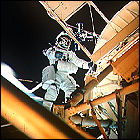 With the first Skylab crew having salvaged the first American space station, the second crew – designated Skylab 3 – lifts off for another long-term stay in space. Alan Bean, Jack Lousma and Owen Garriott spend 59 days aboard Skylab, performing a spacewalk to conduct further repairs to their damaged space station, investigating the effects of long-duration weightlessness and space travel on the human body, and observing the sun through Skylab’s solar telescope system. A thruster leak in the Apollo command/service module forces NASA to consider a rescue mission.
With the first Skylab crew having salvaged the first American space station, the second crew – designated Skylab 3 – lifts off for another long-term stay in space. Alan Bean, Jack Lousma and Owen Garriott spend 59 days aboard Skylab, performing a spacewalk to conduct further repairs to their damaged space station, investigating the effects of long-duration weightlessness and space travel on the human body, and observing the sun through Skylab’s solar telescope system. A thruster leak in the Apollo command/service module forces NASA to consider a rescue mission.
Skylab 2: mission accomplished
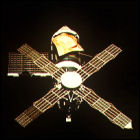 Having repaired and secured the damaged Skylab over the course of three spacewalks, the space station’s first three-man crew leaves the station and returns to Earth after 28 days in space, experiencing gravity after nearly a month of zero-G.
Having repaired and secured the damaged Skylab over the course of three spacewalks, the space station’s first three-man crew leaves the station and returns to Earth after 28 days in space, experiencing gravity after nearly a month of zero-G.
The first Skylab crew’s stay in space sets a new record, twice as long as the previous longest American manned spaceflight, Gemini 7 in 1965.
Skylab 2: risky repair job
 Two members of Skylab‘s first three-man crew undertake a three-and-a-half-hour spacewalk to take on the most difficult and dangerous part of the repairs to the space station: freeing a jammed solar “wing” required to provide almost half of the station’s electrical power. With no handholds and only tethers keeping them anchored to the station, astronauts Pete Conrad and Joseph Kerwin have a hard time even reaching the solar panel, and are knocked loose when, after overexerting themselves trying to manually pull the panel free, it jerks open; with only their tethers keeping them attached to Skylab, it’s a potentially life-threatening situation for both. Conrad, the third man to walk on the moon, later admits that the Skylab repair spacewalk gave him much greater concern for his own survival.
Two members of Skylab‘s first three-man crew undertake a three-and-a-half-hour spacewalk to take on the most difficult and dangerous part of the repairs to the space station: freeing a jammed solar “wing” required to provide almost half of the station’s electrical power. With no handholds and only tethers keeping them anchored to the station, astronauts Pete Conrad and Joseph Kerwin have a hard time even reaching the solar panel, and are knocked loose when, after overexerting themselves trying to manually pull the panel free, it jerks open; with only their tethers keeping them attached to Skylab, it’s a potentially life-threatening situation for both. Conrad, the third man to walk on the moon, later admits that the Skylab repair spacewalk gave him much greater concern for his own survival.
Skylab 2: save the station!
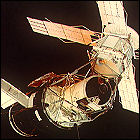 The first three-man Skylab crew lifts off to undertake a mission far different from the one for which they had trained. Their primary objective is now to save the crippled station from the damage it suffered during launch; as it is, Skylab is uninhabitable, with temperatures in its workshop and crew quarters soaring above 100 degrees, threatening to heat up items inside enough to fill the space with toxic gases. The first repair spacewalk takes place less than 24 hours after the crew arrives in an Apollo capsule, and succeeds in starting to drop the temperature inside.
The first three-man Skylab crew lifts off to undertake a mission far different from the one for which they had trained. Their primary objective is now to save the crippled station from the damage it suffered during launch; as it is, Skylab is uninhabitable, with temperatures in its workshop and crew quarters soaring above 100 degrees, threatening to heat up items inside enough to fill the space with toxic gases. The first repair spacewalk takes place less than 24 hours after the crew arrives in an Apollo capsule, and succeeds in starting to drop the temperature inside.
Skylab launched
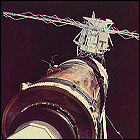 The first American space station, Skylab, is launched unmanned atop the last Saturn V rocket ever to be flown. Within minutes, however, it’s obvious that the space station – whose habitable space is actually the heavily modified third stage of the Saturn V – is already in serious trouble. Launch vibrations rip off one of the solar panels, and the other panel fails to automatically open. With less than two weeks before the first Skylab crew is due to lift off, the clock is ticking for mission planners to devise contingency and repair procedures.
The first American space station, Skylab, is launched unmanned atop the last Saturn V rocket ever to be flown. Within minutes, however, it’s obvious that the space station – whose habitable space is actually the heavily modified third stage of the Saturn V – is already in serious trouble. Launch vibrations rip off one of the solar panels, and the other panel fails to automatically open. With less than two weeks before the first Skylab crew is due to lift off, the clock is ticking for mission planners to devise contingency and repair procedures.
An international space station?
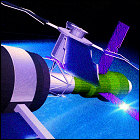 With planning already well underway for the Apollo-Soyuz mission which won’t take place until 1975, NASA commissions a study from McDonnell Douglas to explore the feasibility of a follow-up to the international space mission, possibly involving joining the backup of the Skylab space station (known as “Skylab B”) and a yet-to-be-launched Soviet Salyut space station at some point in the latter half of the 1970s, effectively creating a joint international space station. Although the study goes so far as to specify issues of concern regarding the structure of the two stations and their respective standard atmospheric pressures, the recommendations are shelved pending the outcome of the Apollo-Soyuz flight. Significant political developments in the late 1970s will prevent the idea of an international station from moving forward for at least a quarter century.
With planning already well underway for the Apollo-Soyuz mission which won’t take place until 1975, NASA commissions a study from McDonnell Douglas to explore the feasibility of a follow-up to the international space mission, possibly involving joining the backup of the Skylab space station (known as “Skylab B”) and a yet-to-be-launched Soviet Salyut space station at some point in the latter half of the 1970s, effectively creating a joint international space station. Although the study goes so far as to specify issues of concern regarding the structure of the two stations and their respective standard atmospheric pressures, the recommendations are shelved pending the outcome of the Apollo-Soyuz flight. Significant political developments in the late 1970s will prevent the idea of an international station from moving forward for at least a quarter century.
Apollo 20 hardware reassigned to Skylab
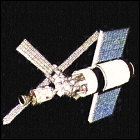 NASA formally cancels the planned Apollo 20 mission to the moon’s Copernicus crater in order to begin converting the upper stage of the mission’s Saturn V rocket into the Skylab space station, to be launched in the early 1970s. Construction of the Apollo command/service module and lunar module scheduled to fly this mission was halted before either vehicle was completed. The crew would have consisted of Stu Roosa, Paul Weitz and Jack Lousma; ironically, Weitz was transferred to the first Skylab crew, while Lousma was part of the second Skylab crew. Both later flew on shuttle missions.
NASA formally cancels the planned Apollo 20 mission to the moon’s Copernicus crater in order to begin converting the upper stage of the mission’s Saturn V rocket into the Skylab space station, to be launched in the early 1970s. Construction of the Apollo command/service module and lunar module scheduled to fly this mission was halted before either vehicle was completed. The crew would have consisted of Stu Roosa, Paul Weitz and Jack Lousma; ironically, Weitz was transferred to the first Skylab crew, while Lousma was part of the second Skylab crew. Both later flew on shuttle missions.